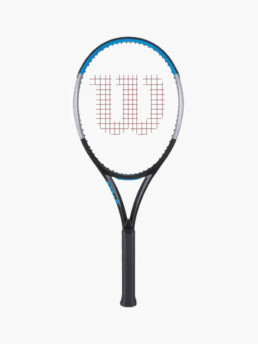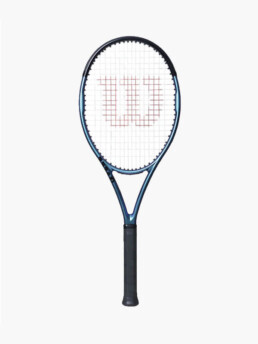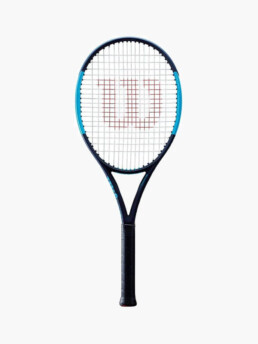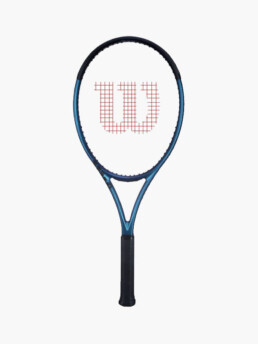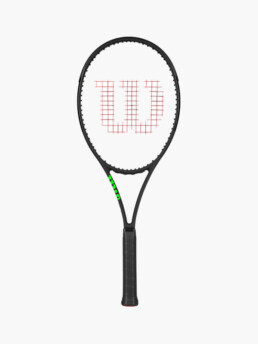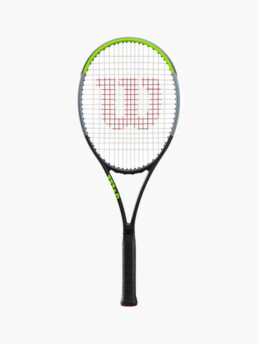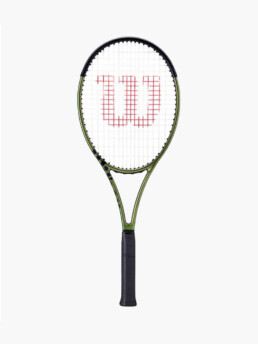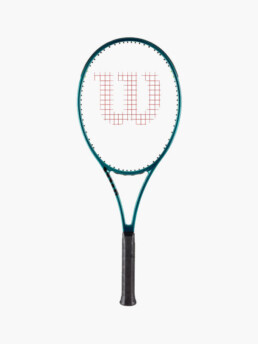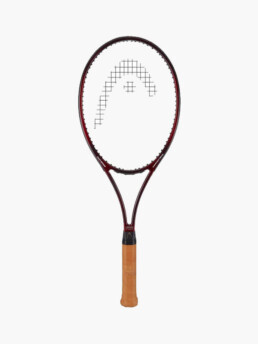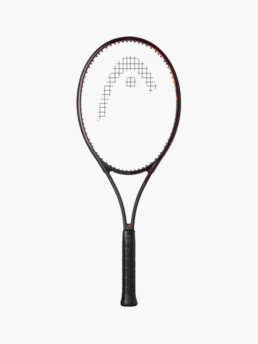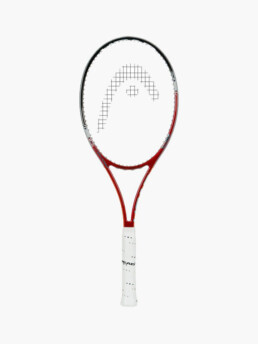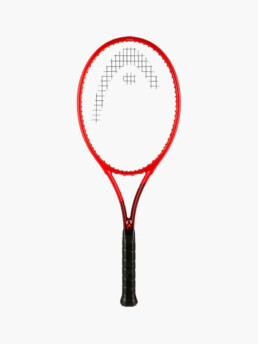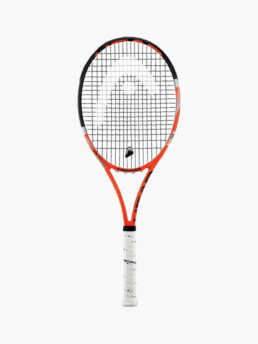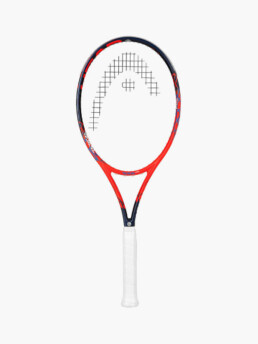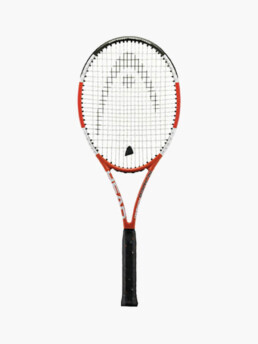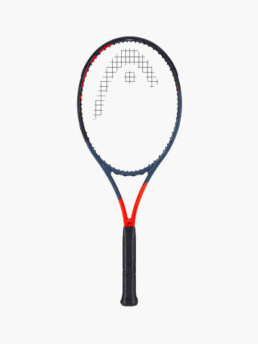What Is A Pro Stock Racket?
What is a pro stock racket? “Pro Stock” simply refers to a model/frame either custom made to that specific player’s specs or just an older model that is out of production but made specifically for that player for continued use during their career. There seems to be a lot of myth surrounding “pro stock” rackets and the prices for these can be 2x or 3x + the original rrp of their retail counterparts.
Some of the more known and widely sort after frames include the H19, H22 from Wilson and the PT57A from Head to name a few. Most pro stock rackets like the H19 and H22 are not sold to the general public, however they can sometimes be found in the second-hand market, often modified or rebranded. Wilson in recent years have aimed to satisfy the demand for “Pro Stock” rackets or rather rackets made from these molds by releasing a version of their most popular pro stock frame the H19 and H22 mold with a different layup for the Ultra V4, Ultra Tour, Blade Pro V8 and Pro V9 molds in the “Pro Labs” online store.
Note that these Blade Pro’s are not exactly as the H22’s sold on the second-hand market but using the same mold, Wilson has used a slightly different layout, so while they come out of the same mold, these Blade Pro’s will play very differently to the H22s. While there seems to be a lot of myth behind what is a pro stock racket, lets try and break down the different types and specs of each.
How Pro Stock models differ to their retail counterparts?
Customisation:
Pro stock rackets are often customised in weight, balance, string patterns, and flexibility to suit the individual preferences of the player. This means they can be adjusted with lead tape, different string types, and tensions to provide more control or power as required.
Material and Construction:
They are made from higher-grade materials, often including more advanced composites and unique layups, compared to the commercially available versions. This leads to better feel, response, and durability.
Frame Design:
The construction of pro stock rackets often includes specific design tweaks, like slight changes in beam width, head shape, or stiffness, to give players the best possible feel for the ball.
No Branding or Minor Differences:
These rackets might lack visible logos or come with altered branding compared to retail versions. They are primarily used for performance, not for marketing.
They can be rebranded and painted by the factory to mimic the current retail counterparts:
Pros have their rackets repainted when a newer model is released giving the illusion that they are always using the latest technology but in-fact this is far from the truth hence why the rackets companies have changed their marketing tag line to “endorsed by” rather than “used by” player X.
Wilson Pro Stock molds
H19
Background: The H19 is widely believed to be a pro stock version of the Wilson Ultra/Ultra Tour family of rackets. It is believed that these rackets share the same production mold but the layup used is completely different with the H19 using more premium quality/density of graphite being used. The end result is a more premium product with widely different playing characteristics including a softer flex pattern, higher static and swing weight, giving the player more feel on contact with the ball.
Specifications: The H19 is known for its classic, more traditional feel, with a small head size and a dense string pattern. The racket’s beam is relatively thin compared to modern rackets, giving it a more flexible and controlled feel.
Customisation: Players often adjust the weight and balance of these rackets, sometimes adding lead tape at specific points to adjust the swingweight and improve stability.
H22
Background: The H22 is a pro stock racket used by several top-level players, and it’s based on the Wilson Blade line, particularly the Wilson Blade 98. The H22 is designed for players who want a more modern, responsive frame with added power and spin.
Specifications: The H22 features a slightly larger head size compared to the H19 and generally has a slightly higher swingweight. The racket’s beam is a bit stiffer, which can help generate more power while maintaining control, especially for aggressive baseline players.
Customisation: Like the H19, the H22 can be customised for balance, swing weight, and feel to match each player’s preferences. It is known for being particularly well-suited for players who rely on spin and aggressive shot-making.
Head Pro Stock molds
The Head PT57A is one of the most famous and widely recognised pro stock rackets used by top-level players, including Stefan Edberg, Marat Safin, and Andy Murray, among others. The PT57A, like many pro stock rackets, is a highly customised version of a retail model, and its popularity lies in its distinctive blend of feel, control, and stability.
Head PT57A
Background: The PT57A is part of the Head “Prestige” series and is one of the most well-known pro stock rackets in the world of tennis. It was originally developed from the Head Prestige Classic 600, a highly regarded racket from the 1990s. The PT57A was refined over time, taking on various customisations to suit the needs of professional players.
Specifications: The PT57A is typically a 98 square inch racket with a thin beam, offering a classic feel with excellent control. It is often used by players who prefer a more traditional, flexible frame that excels in feel and precision. It can be customised by adding weight, adjusting balance, and modifying string tension to fine-tune the racket’s feel and performance.
-
- Head size: 98 square inches
- Length: 27 inches
- Weight: Typically around 340-350g unstrung (customised by players)
- Balance: Often adjusted for a more head-light feel
- String pattern: any variation as required by the player
- Stiffness: Low stiffness rating, which is characteristic of classic rackets for greater comfort and feel
PT57E
Background: Another mold in the Head Prestige family, the PT57E is a more modern iteration that has been used by players like Marat Safin. It is also a version of the Head Prestige Classic 600, but with updates to make it more suitable for today’s game.
Head Mold 630/280 - Pro Stock Radical
Background: The Head Radical series, particularly the Radical 630 mold, has been used by various top pros, including Andre Agassi. The Radical mold is famous for its solid, all-around performance, offering a good mix of control, spin, and power.
PT57D
Background: The PT57D is another variation of the Head Prestige 600 mold and is used by players who prefer a slightly more forgiving and versatile frame.
Head Mold 600 - The Prestige Classic
Background: The Head Prestige Classic 600 was one of the most iconic rackets from the late 1980s and early 1990s. The mold has evolved over the years into the PT57 models used by pro players. It is one of the most highly regarded pro stock frames for its unmatched control and feel.
Head Mold 685
Background: The Head Mold 685 is often associated with early 2000s rackets, and it is another version of the Head Prestige family.
Head PT113B
Background: The PT113B mold is based on the Head Radical and Head Prestige rackets, known for its use by Stefan Edberg and Marat Safin. It has a more flexible feel compared to modern frames, but offers excellent control and spin potential.
Should you purchase one?
For the average joe I would definitely say no, as the likeliness to be able to tell apart at the rec level is highly unlikely and bring really no benefit in using a stick that is much more heavier than its retail counterpart let alone the steep price tag.
For the tennis enthusiast, or someone who wants to own a piece of history from their favourite player or simply because you want to use the same stick as a touring pro then definitely yes.
Keeping in mind that getting your hands on one racket is hard enough let alone multiple copies of it and although some aspects of the weight etc can be manipulated, the “feel” of the stick will be impossible as the layout used to produce the frame in the first place cannot be replicated.


